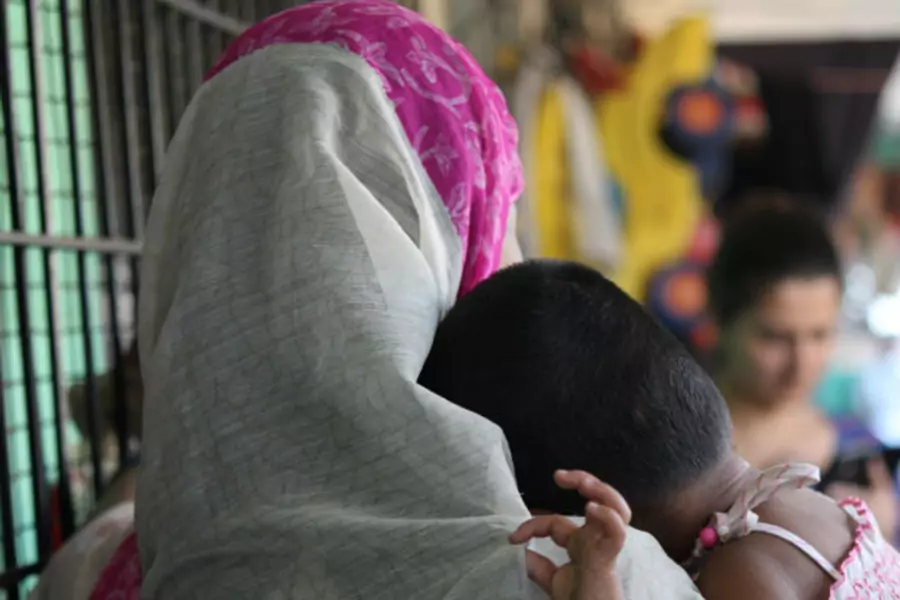Emerging Voices: Hagit Bachrach on Gender Relations and Child Survival in India

More on:
Emerging Voices features regular contributions from scholars and practitioners highlighting new research, thinking, and approaches to development challenges. This article is from Hagit Bachrach, a writer and multimedia producer for CFR.org. Here, she draws insights from a recent reporting trip on how gender norms affect child mortality and malnutrition in India.
Nearly one in every four children who die before the age of five dies in India. Gender roles play an important role in Indian culture and have a profound impact on child survival in a country where the child mortality rate is the highest in the world. These are a few observations from my visit to the Natwar Parikh Nagar Slum Resettlement Township Govandi in Mumbai, with the International Reporting Project. The IRP is a nonprofit organization that provides opportunities for journalists to go overseas to cover critical issues that are underreported in news media, and my recent trip to India was dedicated to child survival and health.
Women Eat Last
It is customary in India that women, who prepare the meals, eat last. In well-off families this may not be an issue, but when food is scarce women may find themselves hungry after their husbands, relatives, and children are done. We visited with health care providers from Doctors For You working in Govandi who say they have found that this tradition often leaves women malnourished. When the women are pregnant or breastfeeding, this inevitably leads to malnutrition in their children as well. In fact, 47 percent of India’s children under the age of five are categorized as malnourished, and approximately 50 percent of all childhood deaths in India can be attributed to malnutrition.
Men Decide
A young mother we spoke to in the slum resettlement project talked about how she barely makes ends meet on her income of under $2 a day. When asked how many kids she plans to have, her answer was, “however many my husband will want.” While women are the primary caregivers, men generally make the decisions.
Women we spoke to also had to defer to their husbands on critical issues pertaining to their children’s survival, such as immunization, as well as their own health, particularly on questions of contraception or sterilization. Another mother we met, who has three children between the ages of twenty days and three years, is now hoping that her husband will allow her to start using contraception, as she doesn’t feel she can afford another child. Her husband’s resistance, she says, comes from concern that she will not be able to conceive again should circumstances change.
According to a 2010-2011 annual health survey conducted by the government of India, more than 60 percent of Indian women do not want more than two children, but decisions about birth control do not seem to be driven by affordability calculations, but rather by tradition, misconceptions, and taboos.
Violence Against Women
The prevalence of violence against women in India has been widely discussed in recent months following the brutal gang rape of a Delhi woman, which sparked domestic protests and international outrage. This sense of a lack of personal safety has a negative impact on the ability of the Doctors For You healthcare workers we visited to introduce much-needed change in the slums in which they operate. The women volunteers described their personal experiences of being regularly harassed by men in the resettlement project they service. What starts off as staring, following, and cat calling may not end well, they said, adding, “You never know what might happen.” They fear being alone with men in a room, they said, and seemed rather reluctant to interact with men altogether. The female health care providers target their educational outreach on child health exclusively to mothers--the mothers who defer to their husbands on decisions pertaining to the fates of their children.
Boys Preferred
In India, inequality between men and women doesn’t begin with marriage. In fact, it begins well before birth. While sex-selective abortions have been banned, families’ preference for boys—and their willingness to prioritize boys’ healthcare–has resulted in a male-to-female ratio of 1,000 to 914 for children under six--the widest gap in the country’s sixty-five years of independence.
Boys often also receive preferential treatment over their female siblings when it comes to critical aspects of child survival such as nutrition and immunization. A mother of a five-year-old son with tuberculosis in the slum resettlement township said she had recently spent a large portion of her monthly income taking her son to a private hospital, though diagnosis and treatment are offered for free by the Doctors For You facility. Many patients, we found, believe that the paid private hospitals provide better care than government-backed or other free services. But despite her son’s diagnosis and her father’s death from tuberculosis just weeks ago, she has yet to get herself or her younger daughter tested. When asked why, she simply said, “I’m too busy.”
According to a December 2011 UNICEF report, “there is increasing recognition in the field of international health and nutrition that gender inequities and dynamics are a major social determinant of health and nutrition outcomes.” Efforts to address India’s child survival challenges must take ingrained gender roles and the relations between women and men into account. In addition to providing affordable and easily accessible healthcare, perhaps what is needed is a greater emphasis on women’s empowerment so that they can prioritize their own needs, become involved in decision-making in their households, overcome the threat of violence, and empower future generations of women.
More on:
 Online Store
Online Store